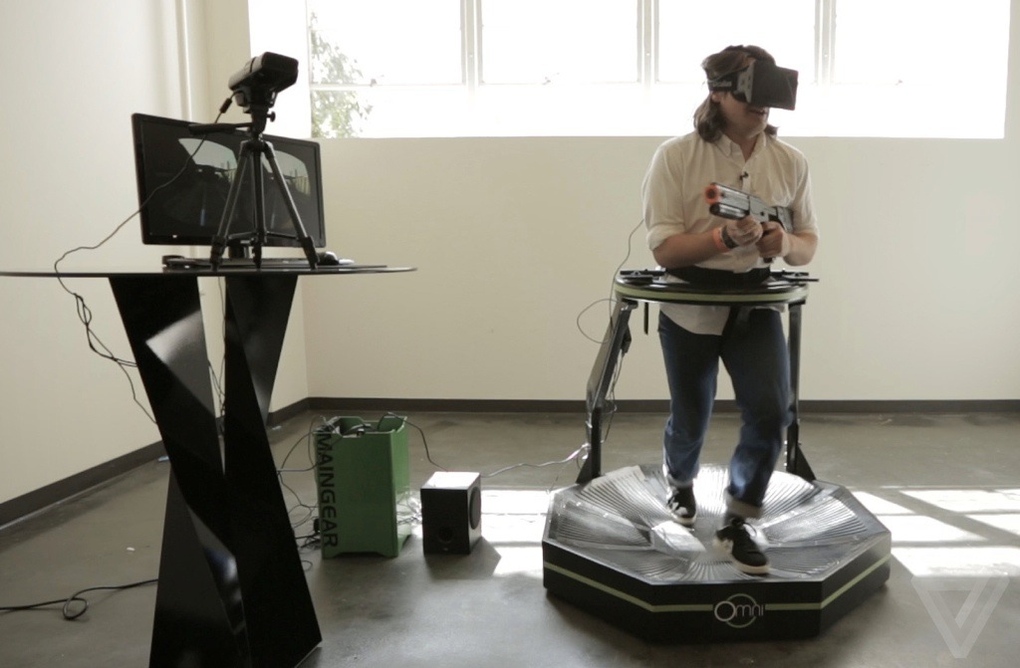myHIN Blog
Category: Fitness Articles

July 17, 2014
When Gaming Is Too Real
There’s been a recent spike in in virtual gaming; virtual reality (VR) gaming that is. One of company at the forefront for VR gaming is a company named Oculus VR. Oculus VR’s leading product is the Oculus rift, which has the potential of bringing the world of virtual reality gaming to our very own living room. Oculus rift has received so much positive feedback other company’s such as Avegant gyph, Infinite Eye, and even Sony are already refining their R&D departments for this exploding market. Though a very cool concept what is it actually doing to your brain? Will our brain even be able to decipher between real and virtual?
To understand this, we must understand how virtual reality units like Oculus rift succeed. The rift comes with a headset that fills the user’s range of vision. This essentially means using your peripheral sight as well as determining depth and translating that to natural responses. These natural responses can then create data used to interact with the video game. To create a sense of real time motion a gyroscope and accelerometer are built into the headset collecting data. The user also wears a set of headphones which allows the user to hear everything that happens in gameplay.
The real “magic” of the rift is how it creates a sense of presence in our minds. This sensation is made by our brains prior experience of what of something is and sensory detail of what something’s supposed to do. Omni is another application of virtual gaming, but this takes a more physical approach. Omni essentially allows a player to run, walk, and jump while in their virtual reality experience. The device itself is stationary, but a harness and slick low friction grooved surface allows the player to almost move seamlessly through a virtual reality gaming environment.
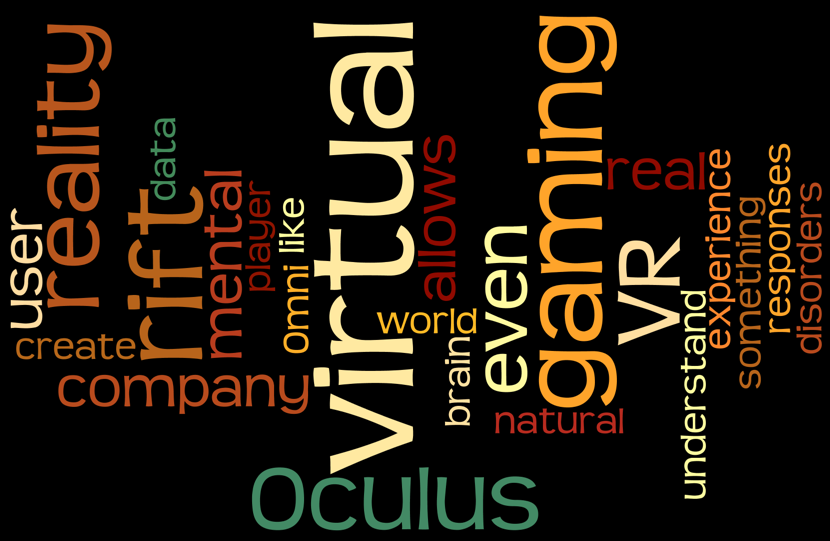
So what’s the problem? Well, nothing at this point. Some are even looking into how devices such as oculus rift have the potential to treat mental disorders like Post Traumatic Stress Disorder (PTSD). VR bring a whole new world of treating mental health disorders or even improve someone’s mental abilities.
Share

April 09, 2014
Newfound Love for Tumblr
Social media sites have steadily been on the rise. From Instagram, to Twitter and then to Tumblr; I have so many that I really can’t choose my favorite. MyHealthImpact has trickled its way into Tumblr. Make sure you check that out. My love for Tumblr is growing. I find a lot of interesting and informative things searching and scrolling my Dashboard.

I follow a majority of what Tumblr bloggers call Fitblrs. Fitblrs are health-related blogs, focused on as the name suggests, being fit. The first blog that I recommend following is AJourneyFullOfHealth. I love this blog because it caters to those on the journey to a healthy life. This blogger doesn’t go out of their way to make themselves seem like a health guru but in fact caters to the real college student struggling with making the right food choices and/or the person battling compulsive eating habits. Another blog that I recommend following is JustWeight-OnIt. This blog is also a Fitblr. I like this blog because it shows many healthy food options and meals. Also included are a few encouraging quotes to keep you going and motivated.
This next blog that I advise following is ProudBlackWoman. The bio for this blog simply states, “A celebration of all it means to be a Black woman”. As I scroll and discover what this blog has to offer, I see the faces of Ida B. Wells Barnett, Dr. Mae Jemison and Coretta Scott King to name a few. I have a love for this blog because to me it is seeking to keep the amazing women in Black History yet alive and unforgotten.
The last and final blog that I recommend following is HeavenRants. I really like this blog because they’re just who they are which in my eyes is relatable, random, loving the skin that they are in, prideful in being Black and a college student. My no means is this blog shoving information down your throat or over the top in any way; just chill and laid back.
These are just my Tumblr suggestions. By all means please check them out, follow them and seek other pages that may catch your eye or interests.
Share

March 02, 2014
Keiara’s Journey to Fit
This time around, I’m really staying focused and I’m truly committed to being healthy and losing a few extra pounds. I started out with a Dr. Oz detox plan that lasted two weeks. After the first two weeks, I decided to keep myself on a modified diet. My diet consists of no fast food, lots of fruits and vegetables, no fried foods, monitoring my sugar and carbohydrate intake and if possible eating meat once a day. In observance of #meatlessMonday’s I definitely try my hardest to do so and go meatless. I’ve been using an app called MyFitnessPal to keep track of what I eat and caloric intake. Along with this, I have become extremely conscious of labels and serving sizes. If it has a label, I have read it! Along with eating right, exercising is an essential part of getting healthy and losing weight. Due to my hype of being completely committed, I decided to order Insanity and Black Girls Workout Too as an alternative to just going to the gym. These DVDs also come in handy when I just don’t feel like making moves to the gym or even leaving my apartment, I have zero excuses. To keep myself on schedule or to at least have a plan and to keep track of what I’ve done (or what I haven’t done), I have a workout calendar that denotes what I should do. With every completed workout, I place a check mark on that particular day. By far, my only issue is stepping on the scale every day. I’m addicted. Lol. I’m proud of myself for staying on track and I encourage others to do the same. If you’ve fallen off track, don’t wait until tomorrow, do it today! A huge misconception is that eating one bad thing will knock you off course, it won’t just don’t make it a continuous habit of eating bad things, overeating or skipping workouts (whatever you may struggle with). I definitely wish everyone the best of luck…you aren’t in this alone!!

Share

January 23, 2014
10 Ways to Impact Your Health from @myHealthImpact
1) Find a medical doctor who cares and you feel comfortable with sharing your medical history.
2) See your doctor once a year.
3) Get the appropriate medical tests and screenings done (e.g., HIV, blood pressure, bone density).
4) Document your medical history.
5) Know your family medical history; talk to family members about your and their health.
6) Consider using technology to track your health goals (calorie intake, exercise times, types of exercises, weight loss, calories burned, etc.).
7) Get a good night’s sleep.
8) Estimate portion sizes for what you eat.
9) Check condoms for expiration date which is provided on the packaging.
10) Keep a positive spirit.

Share

January 16, 2014
5 Ways to Create a Healthy Lifestyle
With the New Year, I wanted to create a healthy lifestyle I could maintain throughout the year. It is important to set yourself up for success with a clear mind and body. With that said, I developed 5 easy ways to create a healthy lifestyle.
1. Exercise Daily
If you want to live well and live longer, you must exercise! Try to exercise at least 30 minutes a day. Whether it’s going to a gym class on campus or going on a jog at your local park, there are plenty of ways to incorporate exercise in our daily routines. Try walking to class instead of taking the bus, or joining an intramural sport team. Studies show that just 10 minutes of exercise makes a difference—so do something!
2. Be a picky eater!
Set yourself up for success! Think about planning a healthy diet as a number of small, manageable steps rather than one big drastic change.
Focus on finding foods you love and easy recipes that incorporate a few fresh ingredients.
Eat in moderation. Moderation means eating less than we do now. It doesn’t mean you eliminate the things that you love. Just try to eat more healthy things than unhealthy ones. Also think smaller portions. For example, when dining out, choose a starter instead of an entree, split a dish with a friend, and don’t supersize anything. When at home, use smaller plates, think about serving sizes and start small.
Eat breakfast! Eating fruits and whole grains in the morning can help jumpstart your metabolism and energy for the day.
Avoid eating at night! Try to set a time where don’t eat after. Eating late at during a time when you are less active, can cause weight gain and create unhealthy habits. Studies show that after-dinner snacks tend to be high in fat and calories. So avoid them!
3. Get a good night’s sleep
Keep a regular sleep schedule. Set a regular bedtime and wake up at the same time every day. Nap to make up for lost sleep, but make sure to be smart about napping. While napping can help you recharge, it can also create bad habits when it comes to your sleep cycles. Lastly, create a relaxing sleep environment. Make your room more sleep friendly. Keep the noise down, keep your room cool, and make sure that your bed is comfortable!
4. Keep Healthy Relationships
The healthiest people are those who have relationships with other healthy people. Healthy relationships reduce stress, unhealthy habits, and help motivate you to succeed and do better. Surround yourself with people who are going to uplift you and make you feel better about yourself. Having a strong foundation is essential to life.
5. Give yourself a break!
Find fun activities for you to do to relieve stress! Go to the movies or go shopping. Create new hobbies. Hang out with your friends. Do anything that makes you feel happy. It’s important for you to take a break from life’s stresses and create awesome memories.
Follow us at tumblr.myhealthimpactnetwork.org (Tumblr)
Follow us on twitter @myhealthimpact
Share

September 07, 2013
Too Much of a Good Thing can be a Bad Thing: Serving Sizes
It’s no secret, I gained a few pounds this summer and I’m sure I’m not the only one. So you’re asking what am I going to do now? What is my plan of action to get this weight off and get back in shape? I feel like a huge part of fixing anything is being observant of what it is that you’re doing wrong. I know exactly what I’m doing wrong and it’s completely ignoring how much I’m eating; portion sizes.
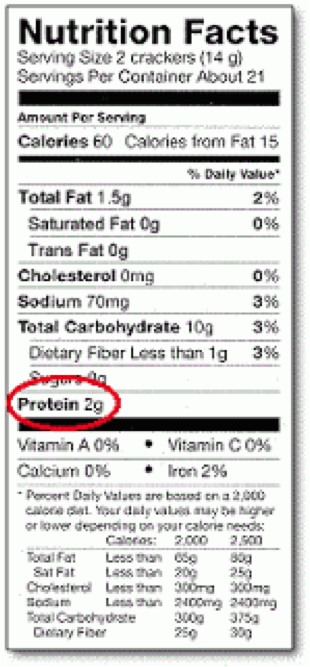
I don’t think many of us realize that we eat way more than what is suggested on the back of the box or container. If you’ve never looked and tried, I honestly think many would be surprised and still hungry. I can’t lie, it was really a shock to my body and mind because I would eat the suggested amount and my mind would say “That’s it?!?” while my stomach seemed to look at me for more. While you may think that the whole bag is what you should eat in one sitting, it’s really only like five or six.
I believe that a huge part of being healthy and getting fit is eating right. What good is eating the right things but too much of it? It sounds like purpose defeated to me. Not only am I challenging myself but I’m also challenging everyone reading this post to get it right with me. Take the time to look at the label; the amount of sodium, carbs, and the serving size. Look at the suggested serving sizes, eat just that accordingly and let’s get fit together.
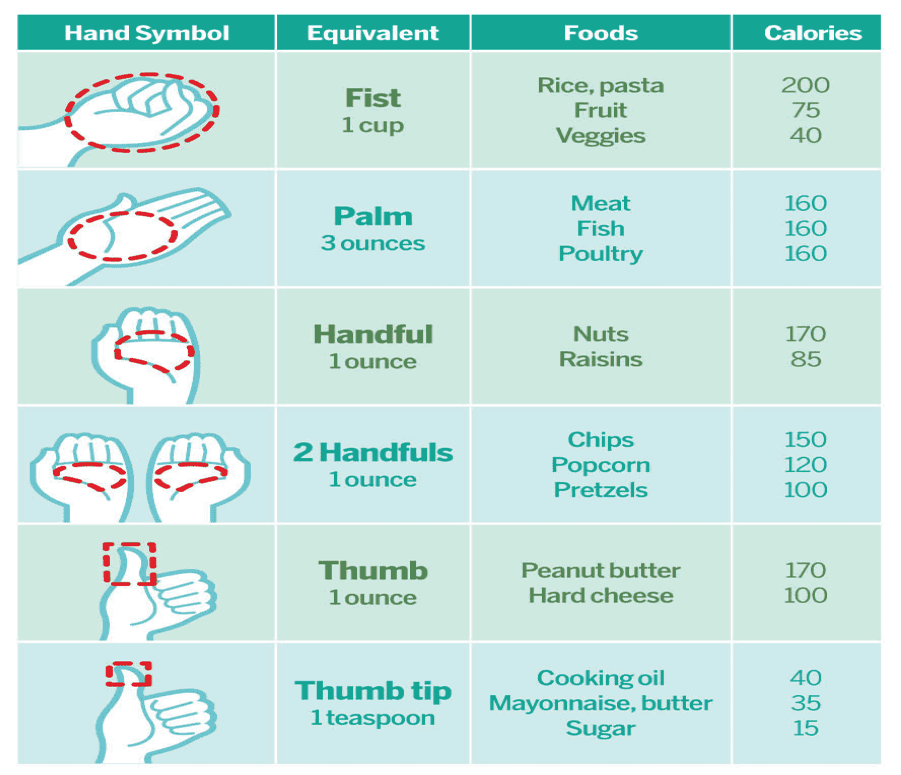
Follow us at tumblr.myhealthimpactnetwork.org (Tumblr)
Follow us on Twitter @myhealthimpact
Share

February 21, 2013
Tracking your Health with Wearable Technology
At the top of every New Year, there seems to be a fitness trend that propagates through families, colleges, and churches, alike. The notion that this year is the perfect time to get into the best shape of your life is evident on social networks, such as Facebook and Twitter. Hash tags like #teamGetFit, #trainHard, and #bodyProud are a select few that are seen everywhere and even appended to statuses and tweets posted around the world. A lot of the time, the motivation behind this burst in healthy behavior corresponds with New Year's resolutions or the mere fact that some over indulged during the Thanksgiving and Christmas holidays! However, as the months past by and the year gets old, fitness clubs and sport gyms see a constant decline in membership and weekly attendance. Whatever the reason may be, I set out to find if this year was any different than in year's past.
In comes CES 2013, the Consumer Electronics Trade Show where the biggest tech news is announced for those of us who have a deep affinity for smart devices and innovative gadgets. Originally seen as the place where power hitters, such as Apple, Microsoft, Samsung, and Amazon, have unveiled new products, its recently transformed into the "IT" place where the little guys bring us the most joy. Welcome to the future, where your body is technology's new frontier. The mobile applications and computing power we've become accustomed to in our smartphones are starting to migrate into wearable devices. Whether it is the Nike+ Fuelband from our favorite sneaker brand, fitbit, the same company that added style to Bluetooth earpieces or the Fitbit Ultra by an upcoming start-up company focusing on health and fitness devices; the ability to upload and analyze your personal training sessions can now be done on the fly without the need of paper and pencil. Figures 1 and 2 show a quick glance of each company's wearable devices and corresponding mobile applications.
Figure 1.
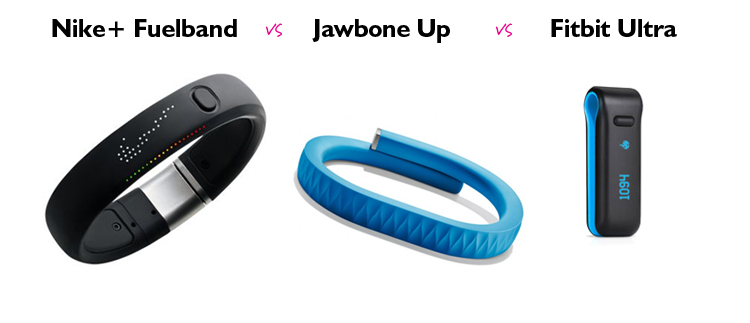
Figure 2.
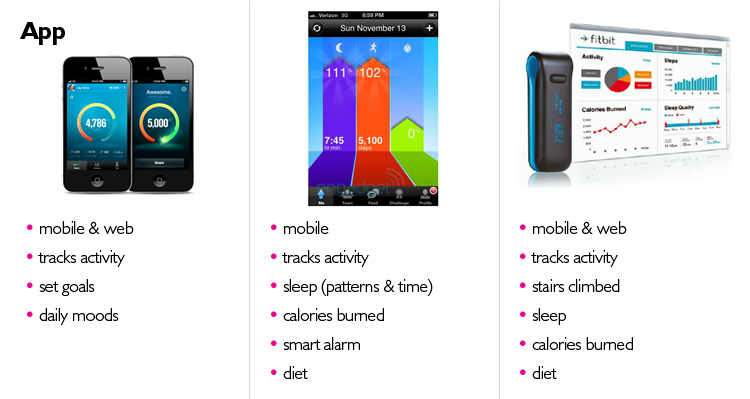
POLL: Does being able to track your fitness activity and sleep patterns, interest those committed to fulfilling their New Year's resolution? Does mobile health “fit” into your commitment to your personal health and wellbeing?
Sources:
Figures 1 and 2 - FashioningTech
Share

February 12, 2013
Let’s Talk About Sex Because Sexual Health is Important
A study conducted by researchers at the University of Chicago found that only 60% of OBGYN’s ask questions about their patient’s sexual activities sex during medical visits. They also found that many OBGYN’s knew very little about their patients’ sexual behavior, sexual satisfaction and even sexual orientation.
Why are women not discussing their sexual lives with their physicians? According to the researchers, the reasons may be that 1) physicians do not ask and 2) patients do not bring their sexual activities up as points of concern.
Discussing sexual health with your physician is important, because changes in sexual functioning or behaviors can help the doctor identify other health problems that could escalate if left diagnosed and untreated. For example. HIV/ AIDS tests are also not always routinely given to all women and when a doctor knows about your sexual health, they may know when to recommend you take one. This is particularly important as rates of HIV infection among African American and Hispanics women are much higher than those found in white women. Sixty-four percent of women with HIV are Black. And HIV infection is among the top 10 leading causes of death for Black females.
Some tips to help you have discussions about your sex life with your doctor are.
- Find a doctor you can trust. Many women settle for the provider that is given to them by their insurance company, but finding a good doctor is sometimes like dating. You must think of what characteristics and work practices you need in a provider that will compliment your needs. If you cannot trust you doctor, you might not feel comfortable discussing everything with your doctor and you may be putting your health at risk. If one relationship is not working, find a new one.
- Do not limit your discussions of sexual behavior to your OBGYN, you might find that you are more comfortable talking about your sex life with your primary care doctor. You might also feel more comfortable discussing some concerns with a therapist or psychological professional. For example, concerns such as coping with sexual abuse, suspecting that your long-term partner is unfaithful, becoming dissatisfied with sex or having multiple simultaneous sexual partners can all affect your health. For each of the above concerns, your health care provider or team can provide support and recommend appropriate treatments.
- Keep track of your sexual behavior, functioning and questions. Bringing a record of concerns related to your sexual health to your physician can help start the conversation and may help your diagnosis better treat you. Remember, it is OK to ask that certain types of information remain conversational and not become parts of the medical record.
- Seek care and stay up to date with routine care activities. If you have a long-term relationship with the same care provider, it will be easier to discuss your sex life and it will be easier for that provider to identify changes in your sexual behavior and find solutions to help you.
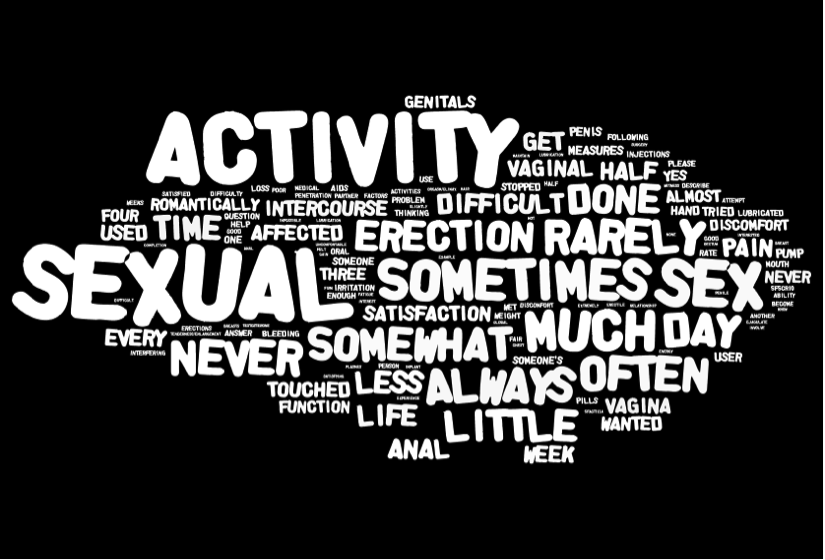
Resources:
Sobecki JN, Curlin FA, Rasinski KA, Lindau ST. What We Don't Talk about When We Don't Talk about Sex1: Results of a National Survey of U.S. Obstetrician/Gynecologists. The Journal of Sexual Medicine. 2012;9(5):1285-94.
Dr. Heather Watts, a liaison member to ACOG's Committee on Health Care for Underserved Women
Most women are infected with HIV through heterosexual sex. Some women become infected because they may be unaware of a male partner’s risk factors for HIV infection or have a lack of HIV knowledge and lower perception of risk. Relationship dynamics also play a role. For example, some women may not insist on condom use because they fear that their partner will physically abuse or leave them. (source: http://www.cdc.gov)
http://www.wordle.net/show/wrdl/6304616/Sexual_functioning_surveys
Share
In Partnership with: Poole College of Management, College of Humanities and Social Sciences, National Science Foundation, Penn State
Take Action, Get Tested: Find Your Local Testing Center Why Get Tested?

